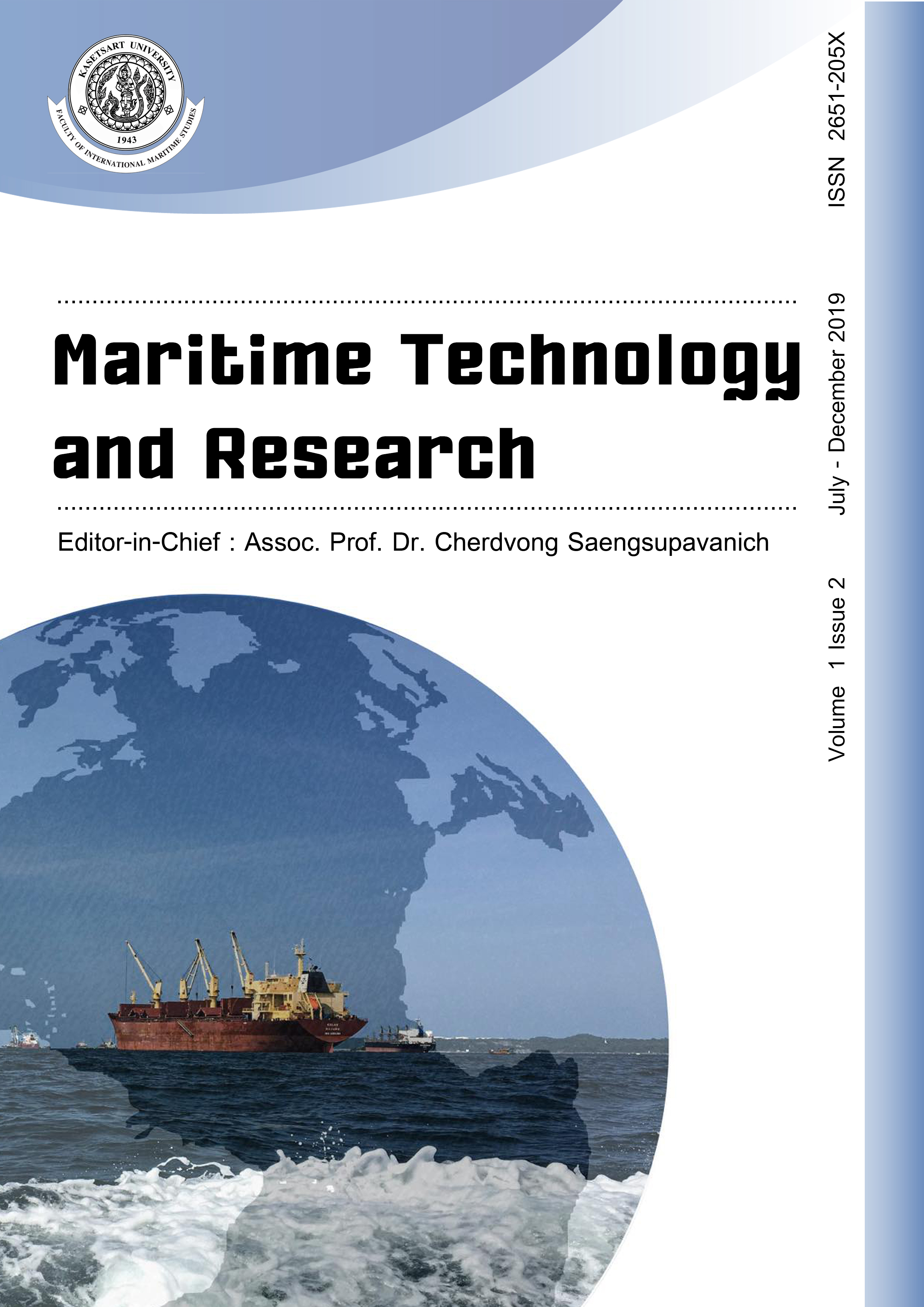Preliminary parameter characterization for numerical optimization of ducted propellers
DOI:
https://doi.org/10.33175/mtr.2019.183390Keywords:
Ducted propeller, Potential flow, Design, OptimizationAbstract
In this paper, a preliminary parameter characterization for the numerical optimization of ducted propellers was performed. The ENSTA Bretagne in-house solver used is based on the potential flow theory. Although the potential flow solver is able to solve unsteady problems, in this preliminary study, only steady state flow problems are considered. Different parameters are analyzed, such as the gap between the propeller tip and the inner duct surface, as well as the propeller location in the duct tube. The analyses are carried out on a standard advance coefficient range. A quick study shows that a neutral NACA profile for the duct section can provide higher performance predictions than the classical accelerating Kort nozzle 19A. The parameter study shows that the best axial position for the rotor is not necessarily near the duct entrance and, more importantly, that a thinner duct profile can give better hydrodynamic performance.
References
Baltazar, J., Falcão de Campos, J. A. C., & Bosschers, J. (2012). Open-water thrust and torque predictions of a ducted propeller system with a panel method. International Journal of Rotating Machinery 2012, 474785. doi:10.1155/2012/474785
Baltazar, J., Rijpkema, D., Falcao de Campos, J. A. C., & Bosschers, J. (2013). A comparison of panel method and RANS calculations for a ducted propeller system in open-water. In Third International Symposium on Marine Propulsors, Launceston, Tasmania, Australia.
Bosschers, J., Willemsen, C., Peddle, A., & Rijpkema, D. (2015). Analysis of ducted propellers by combining potential flow and RANS methods. In Fourth International Symposium on Marine Propulsors.
Coache, S., & Laurens, J. M. (2014). Trawler duct propeller design: From systematic series to CFD. In 3rd International Symposium on Fishing Vessel Energy Efficiency.
Dasira, A., & Laurens, J. M. (2014). Energy efficiency analysis of trawlers: Case study on an Indonesian trawler. Indonesian Scholar Journal 1(1), 245-250. doi:10.12962/ j23546026.y2014i1.202
Gaggero, S., Villa, D., Tani, G., Viviani, M., & Bertetta, D. (2017). Design of ducted propeller nozzles through a RANSE-based optimization approach. Ocean Engineering 145, 444-463. doi:10.1016/j.oceaneng.2017.09.037
Hoeijmakers, H. W. M. (1992). Panel methods for aerodynamic analysis and design. Washington, DC: National Aeronautics and Space Administration.
Kerwin, J. E., Kinnas, S. A., Lee, J. T., & Shih, W. Z. (1987). A surface panel method for the hydrodynamic analysis of ducted propellers. Transaction SNAME 95, 1-22.
Kotsonis, M., Pul, R., & Veldhuis, L. (2014). Influence of circulation on a rounded-trailing-edge airfoil using plasma actuators. Experiments in Fluids 55(7), 1772. doi:10.1007/s00348-014-1772-y
Kuiper, G. (1992). The Wageningen Propeller series. Wageningen: Marin Publication.
Laurens, J. M., Deniset F., & Moyne, S. (2012). A BEM method for the hydrodynamic analysis of fishing boats propulsive systems. In Second International Symposium on Fishing Vessel Energy Efficiency. Vigo, Spain.
Laurens, J. M., Leroux, J. B., & Coache, S. (2013). Design and retrofit of the propulsion of trawlers to improve their efficiency. Spain: A Coruna.
Morgan, W. B. (1961). A theory of the ducted propeller with a finite number of blades. University of California Report, Berkeley, California.
Saari, A. (2014). Hydrodynamic study on a ducted propeller in a large vessel by time-accurate self-propulsion simulation with Reynolds-Averaged Navier-Stokes-equations. (Master Thesis). Aalto University, Helsinki, Finland.
Van Manen, J. D. (1970). Wake adapted ducted propellers. Wageningen: H. Veenman & Zonen.
Downloads
Published
Issue
Section
License
Copyright: CC BY-NC-ND 4.0








